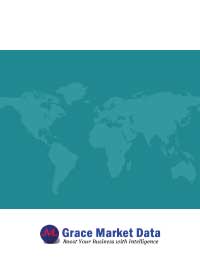North America diagnostic specialty antibodies market is expected to grow by 4.2% annually in the forecast period and reach $10.86 billion by 2027 owing to the high number of patient pool undergoing diagnosis of HIV and growing demand for speciality diagnostics around the world, the advancements in DNA based technologies and diagnostics, and the increase in the prevalence of diseases such as infectious diseases, influenza and cancer.
Highlighted with 20 tables and 34 figures, this 84-page report “North America Diagnostic Specialty Antibodies Market 2020-2027 by Type (Monoclonal, Polyclonal, Others), Application (Oncology, Hepatitis, Infectious, Dengue), End User (Hospitals, Diagnostic Labs), and Country: Trend Outlook and Growth Opportunity” is based on a comprehensive research of the entire North America diagnostic specialty antibodies market and all its sub-segments through extensively detailed classifications. Profound analysis and assessment are generated from premium primary and secondary information sources with inputs derived from industry professionals across the value chain. The report is based on studies on 2017-2019 and provides estimate for 2020 and forecast from 2021 till 2027 with 2019 as the base year. (Please note: The report will be updated before delivery so that the latest historical year is the base year and the forecast covers at least 5 years over the base year.)
In-depth qualitative analyses include identification and investigation of the following aspects:
- Market Structure
- Growth Drivers
- Restraints and Challenges
- Emerging Product Trends & Market Opportunities
- Porter’s Fiver Forces
The trend and outlook of North America market is forecast in optimistic, balanced, and conservative view by taking into account of COVID-19. The balanced (most likely) projection is used to quantify North America diagnostic specialty antibodies market in every aspect of the classification from perspectives of Type, Application, End User, and Country.
Based on Type, the North America market is segmented into the following sub-markets with annual revenue ($ mn) for 2017-2027 included in each section.
- Monoclonal Antibodies
- Polyclonal Antibodies
- Other Types
Based on Application, the North America market is segmented into the following sub-markets with annual revenue ($ mn) for 2017-2027 included in each section.
- Natural/Biological Products
- Synthetic Products
Based on Application, the North America market is segmented into the following sub-markets with annual revenue ($ mn) for 2017-2027 included in each section.
- Oncology Diagnosis
- Hepatitis Diagnosis
- Infectious Disease Diagnosis
- Dengue Diagnostics
- Tuberculosis Diagnostics
- HIV Diagnostics
- Other Applications
Based on End User, the North America market is segmented into the following sub-markets with annual revenue ($ mn) for 2017-2027 included in each section.
- Hospitals & Clinics
- Diagnostic Laboratories
- Other End Users
Geographically, the following national/local markets are fully investigated:
- U.S.
- Canada
- Mexico
For each key country, detailed analysis and data for annual revenue ($ mn) are available for 2017-2027. The breakdown of key national markets by Type, Application, and End User over the forecast years are also included.
The report also covers current competitive scenario and the predicted trend; and profiles key vendors including market leaders and important emerging players.
Key Players (this may not be a complete list and extra companies can be added upon request):
Abbott Laboratories
Abcam plc
Agilent Technologies, Inc.
Aytu BioScience, Inc.
Becton, Dickinson and Company
Bio-Rad Laboratories, Inc.
Boehringer Ingelheim International GmbH
Creative Diagnostics
Enzo Life Sciences, Inc.
F. Hoffmann-La Roche AG
Merck KGaA
Polymun Scientific Immunbiologische Forschung GmbH
Sanofi S.A.
Sartorius AG
Thermo Fisher Scientific Inc.
(Please note: The report will be updated before delivery so that the latest historical year is the base year and the forecast covers at least 5 years over the base year.)



